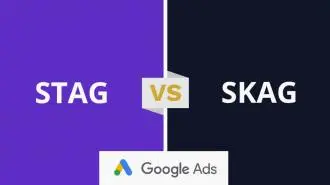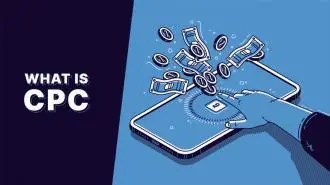Summary / TL;DR
Google Advertiser Verification is a mandatory process introduced by Google to improve transparency and user trust in digital advertising. Originally launched in 2018 for political ads, it now covers all advertisers, requiring them to verify identity, business details and operations. The process involves a three-step assessment: a business questionnaire, identity confirmation and potentially business operations verification, all to be completed within 30 days. Failure to comply can result in ad account suspension. Verification is especially required for sensitive industries such as elections, gambling and healthcare to prevent fraud and misinformation. Verified advertisers benefit from improved ad visibility, fewer disruptions and a competitive edge.
Targeted advertising is the forerunner of modern ad campaigns, which has raised privacy concerns among consumers.
The more transparent advertisers are about how they use personal data, the more trust they earn from consumers. To bolster this trust, Google rolled out the Advertiser Verification Program, ensuring users know who they’re dealing with.

This program addresses the users’ concerns and ensures that the direct or indirect content provider represents their business and products. Once the verification process is complete, users can learn more about the advertiser and see detailed information about the ad.
Let’s look at the Google Advertiser Verification Program to learn how it works, how it is verified, and its benefits.
Want to receive updates? Sign up to our newsletter
Each time a new blog is posted, you’ll receive a notification, it’s really that simple.
An Introduction To The Google Advertiser Verification Program
Originally launched for political ads back in 2018, the Google Advertiser Verification Program has since widened its scope to embrace all advertising agencies.
The program has seen an expansion of such a scale to keep the promise of providing transparent information that Google made. In turn, this program also allows users more control over the data collected from them as well as the ads served to them.
Google introduced this program to ensure people feel secure while browsing the search engine. Before the verification program, privacy concerns were rampant among users, posing a significant challenge to the digital advertising ecosystem. Naturally, Google was quick to act upon this and present a solution.
By preventing bad actors from misusing ads, the verification process also educates consumers about how ad-serving really works. So, rolling out the Advertiser Verification Program was a crucial move forward for Google.
As time passed, the verification program streamlined the process to include identity and business operations verification under the same umbrella. Before this unification, identity and business verifications had to be performed separately.
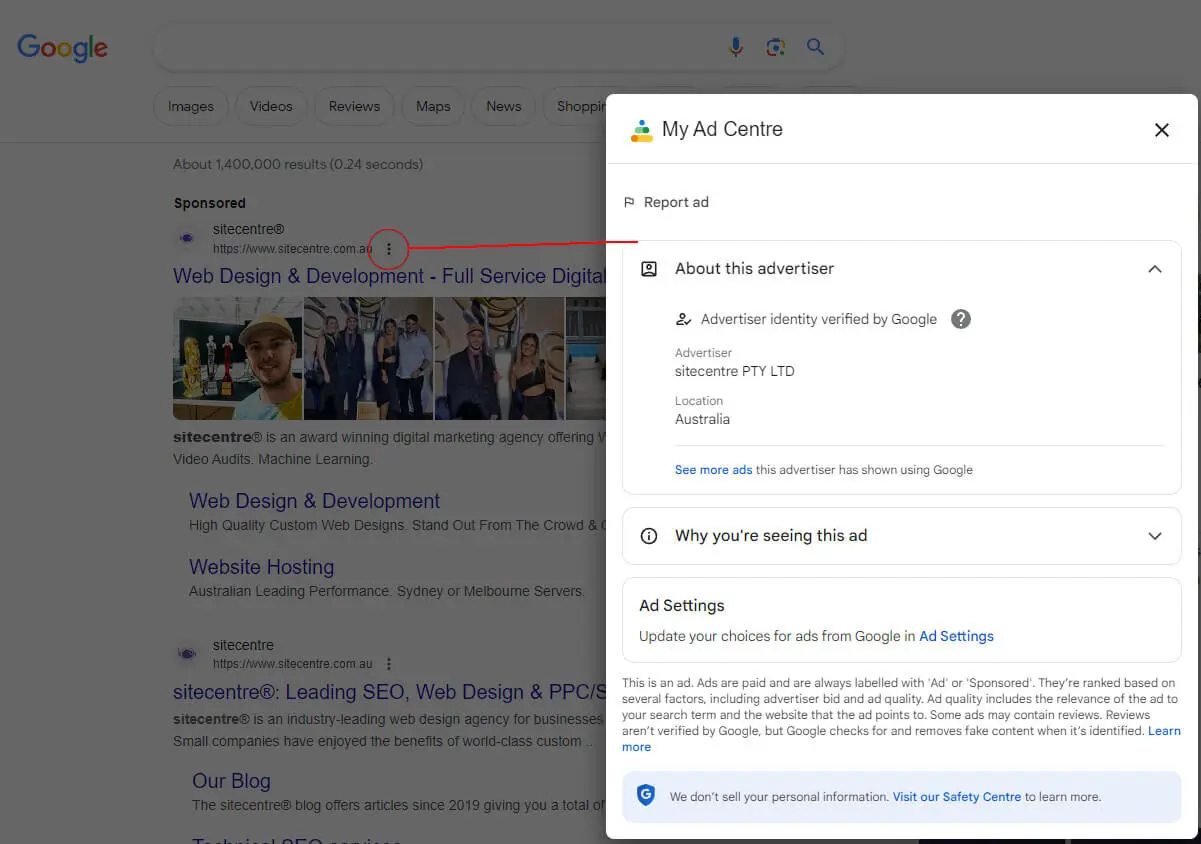
The Advertiser Verification Process
Google Ads users planning to run ads for potential customers will receive an email where requested verifications are outlined.
After receiving this email, they may have 30 days to complete their multi-stage verification process. However, be aware that Google may impose a deadline if the Google Ads user fulfils certain criteria, some of which include:
- Google Ads user’s ad content is deemed potentially misleading
- As a security measure for users
- Google Ads user accounts facing suspension due to legal or policy reasons
- As a part of a phased verification rollout
Once the process to complete verification begins, the advertiser, their corporate team or other users on the same ad account will receive an in-account notification from the Google team. This notification will always be displayed at the top of the advertiser’s email account.
Typically, the Advertiser Verification process occurs in three steps and may change based on the advertiser’s account. The verification process may vary based on the account structure and billing setup and if they promote an organisation or an individual. In such cases, a complete additional verification instruction set is provided to the advertiser in their Google Ads accounts.
Google Ads users need to provide the following basic information:
- Business details
- Identity verification
- Business Operations verification
Let’s discuss these steps in detail.
1. About The Business
The first step of the verification program is a questionnaire about the advertiser’s business and Google Ads accounts.
This questionnaire is found within the ‘About Your Business’ section, or the business section, of the Google Ads account page. By answering these business questions as accurately as possible, the advertiser provides information pertaining to their business directly to Google. These answers help the Google team understand the advertiser’s business and determine their mission statement and target audience.
Listed below are a few basic questions related to the Google Ads account user’s business that may be found in this step of the verification process:
- Is your business an advertising agency?
- Who is the expense-bearer for your ads?
- Do you manage advertisements for your products or services or those of someone else’s?
- What industry do you work in?
The person filling this questionnaire must be a part of the advertiser’s Google Ads account admin team or the advertiser themself. This ensures that the person answering such questions has complete information on the business practices and operations and can respond accurately.
Based on the responses garnered after completing the questionnaire, the Google Ads platform team will inform the advertiser about the following steps. Additionally, information on any additional steps required for verification will be provided to the advertiser.
2. Identity Verification
Google Ads users may access the ‘Verify Your Identity’ section of the Google advertiser identity verification process after the first step has been completed. As the name suggests, the advertiser must verify their legal name, thus verifying your identity through the advertiser identity verification or business operations verification process.
This verification may be presented to their organisation or client based on how the advertiser’s Google Ads account is set up. The search engine giant will verify details related to the advertiser’s identity and act according to their transparency and ad disclosure policy. This policy, tied to the ad disclosures, involves disclosure of any ads run by the advertiser, including the advertiser’s name and location.
As with the previous step, identity verification must be handled by the advertiser’s representative or the advertiser themself.
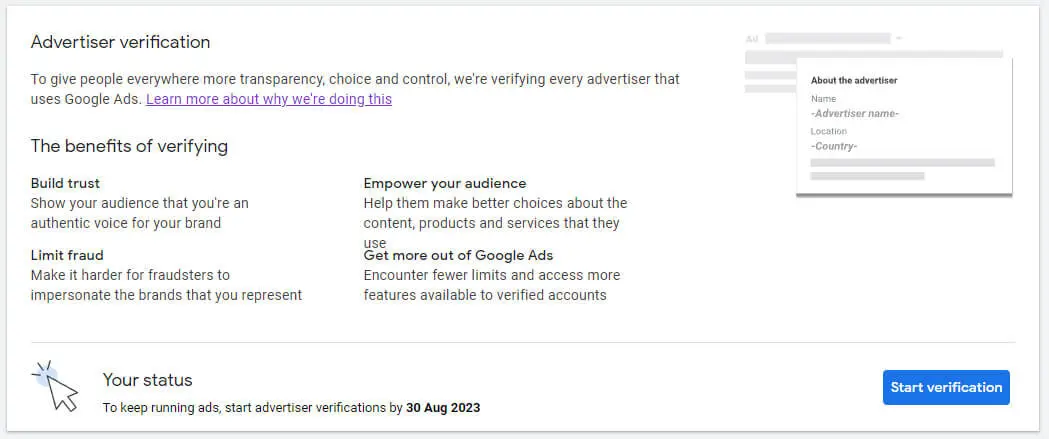
3. Business Operations Verification
Like the identity verification step, the business operations verification section can be accessed after completing the “About the Business” questionnaire. The necessity of this verification process depends solely on the responses provided in the questionnaire. As such, the business operations verification step may be an optional one.
In this step, the Google Ads team will require verification of the advertiser’s business details. The business operations verification requirements are listed as follows:
- Advertising practices or business practices
- Business model
- Registration information
- Relationship with current clients, third parties or unauthorised customer support services
- Service type (technical support services, sales services, etc.)
Similar to the ‘About the Business’ questionnaire, the advertiser is given a specified time period of 30 days to complete the advertiser verification for business operations. Should the advertiser be unable to do so successfully within the specified period, their advertising account will face being paused or account suspension.
Once they complete the verification process, the advertiser must await a response from Google about its success or failure. They will receive a confirmation at their email address once they successfully complete the account verification.
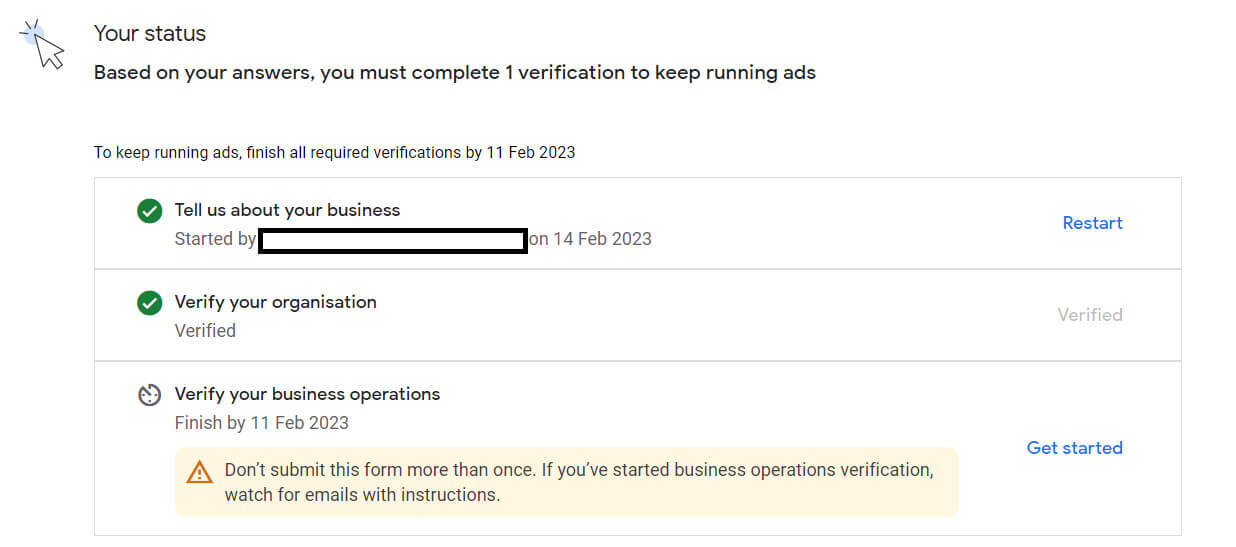
Who Should Go Through The Verification Process?
Any Google Ads advertiser operating within industries where consumers could face physical or financial harm is required to go through the verification process. This protective measure is a part of Google’s advertiser verification program designed to prevent misinformation, fraud or scams, all prevalent in certain spheres of the internet.
Here are a few examples of advertisers who must go through the verification programs.
1. Election Advertisers
The search engine requires advertisers to go through the verification process to run ads, especially election ads, in Google Ads. As part of the 2018 changes, advertisers will be required to comply with this, and as such, the advertisers must disclose information about their ad campaigns publicly to prevent any misinformation.
The verification process may include two parts that can take up to a week to complete.
2. Gambling Industry Advertisers
Specific Google-restricted queries include advertisements promoting gambling, particularly those not complying with the regional gambling laws. That said, the search engine does allow ads that indicate a consumer may win prizes or money, provided the advertiser is verified and in compliance with Google Ads policies.
Still, gambling advertisements are restricted to certain countries and never target minors. Additionally, the advertisers must have a landing page that includes basic information about the potential risks of gambling.
3. Healthcare Advertisers
The search engine blocks certain healthcare advertisements unless the advertiser is verified and is in a target-approved country. The risks posed by the sale of drugs are too grave to advertise freely, after all.
As such, the advertising pharmacy or the advertiser must provide proof of being associated with a relevant pharmaceutical authority in the target countries. They must also ensure they comply with the regulations of each country they plan to advertise their services before filling out the application.
The Advantages Of Google’s Advertiser Verification
In addition to consumers benefiting from the increased transparency, Google Ads users have a few benefits to reap after going through advertiser verification. Due to the impact these advantages can have on your reach and visibility, they must apply for verification as soon as possible.
1. Improved Ad Visibility
As a verified advertiser, the Google ad algorithm prioritises your business on the Search Engine Results Page (SERP). This can improve the campaign performance of your advertising efforts for your brand, an important aspect of digital marketing.
2. Reduced Disruptions
Verified advertisers face fewer chances of their ads being flagged for authenticity issues. Since you are already verified, these instances of flagging will not affect your reach as much.
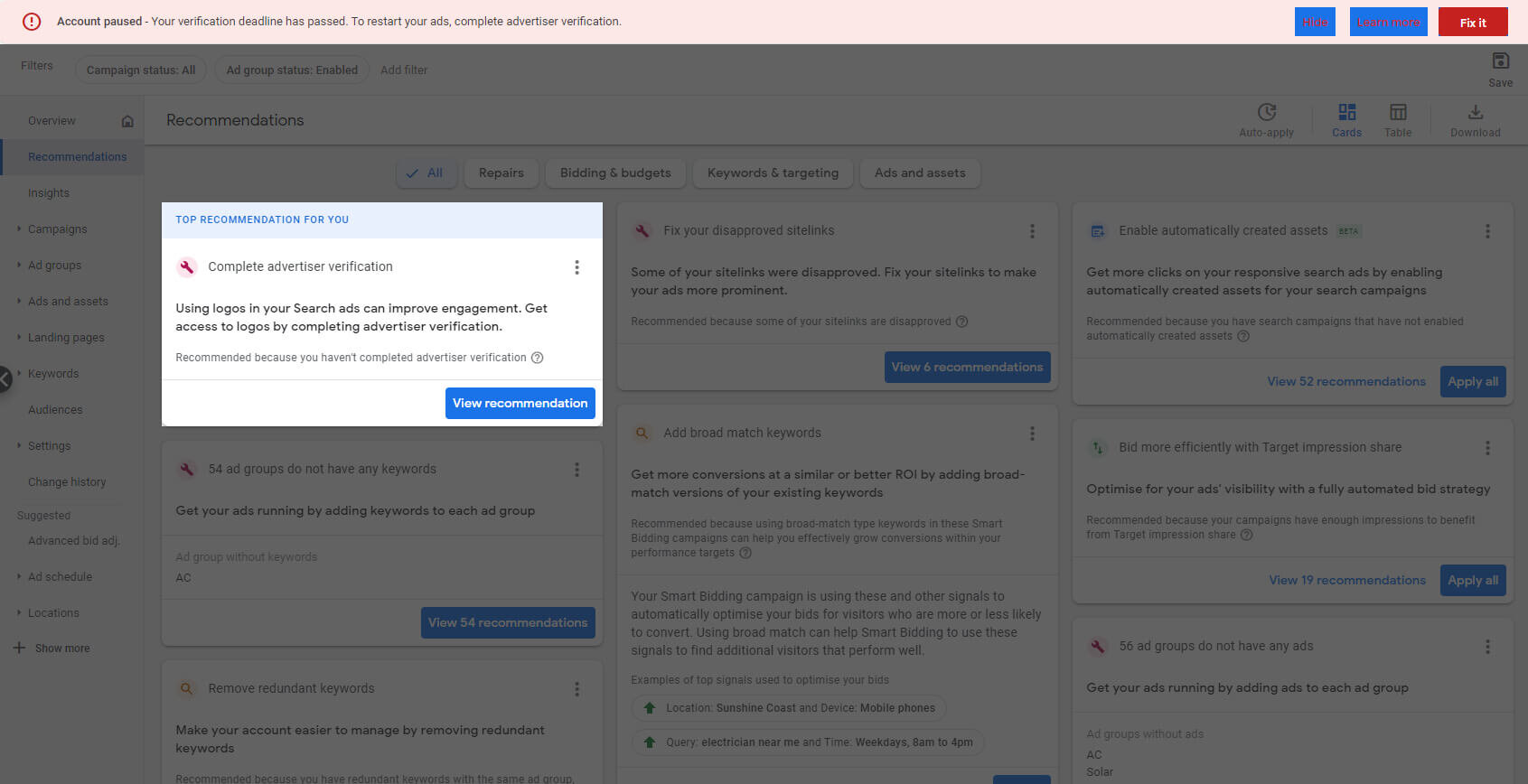
3. Competitive Advantage
Getting verified before your competition is an excellent way to maintain a leg up on them. With the extended reach afforded through the verification status, you will have a greater opportunity to capture the competition’s market share.
Building Trust And Transparency Through Google Advertiser Verification
With the goal of improving user trust and transparency, Google announced the introduction of the Advertiser Verification process, a significant move in the Google advertising landscape.
The verification process is quite straightforward, needing documents that prove the Google Ads user’s identity and business details. Thanks to its simplicity, it’s done in just a few days, making it handy for all legitimate businesses.
Additionally, the verification system is also beneficial for direct advertisers, particularly with the improved visibility they receive through verification. This makes the process a boon for everyone involved, from the end user to the advertiser and the search engine.
For more information on Google Ads, such as how long a campaign takes to work or how to lower your CPA, don’t hesitate to contact our team. At sitecentre®, we excel in Google Ads management, ensuring the achievement of your targets and surpassing your competitors!

